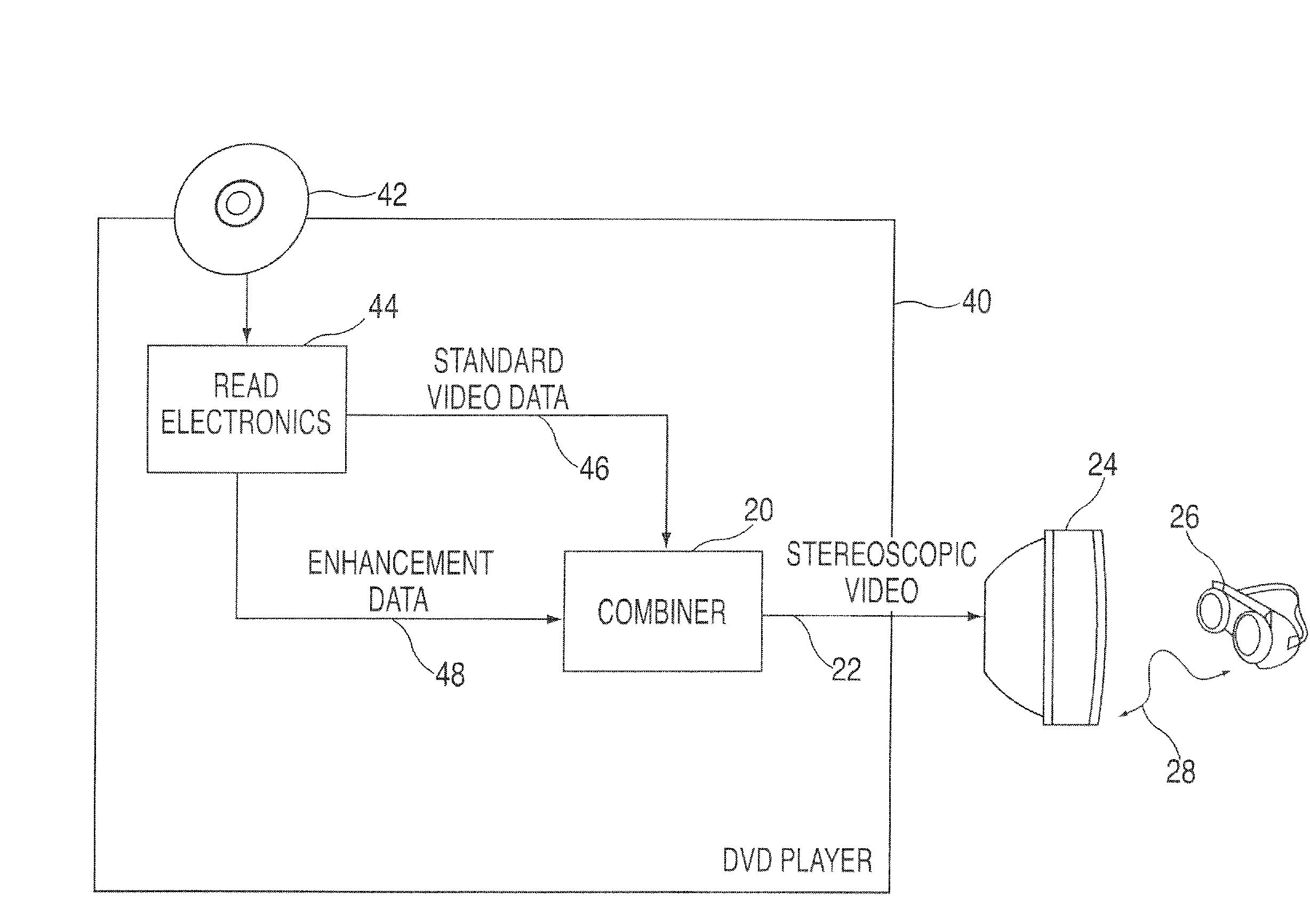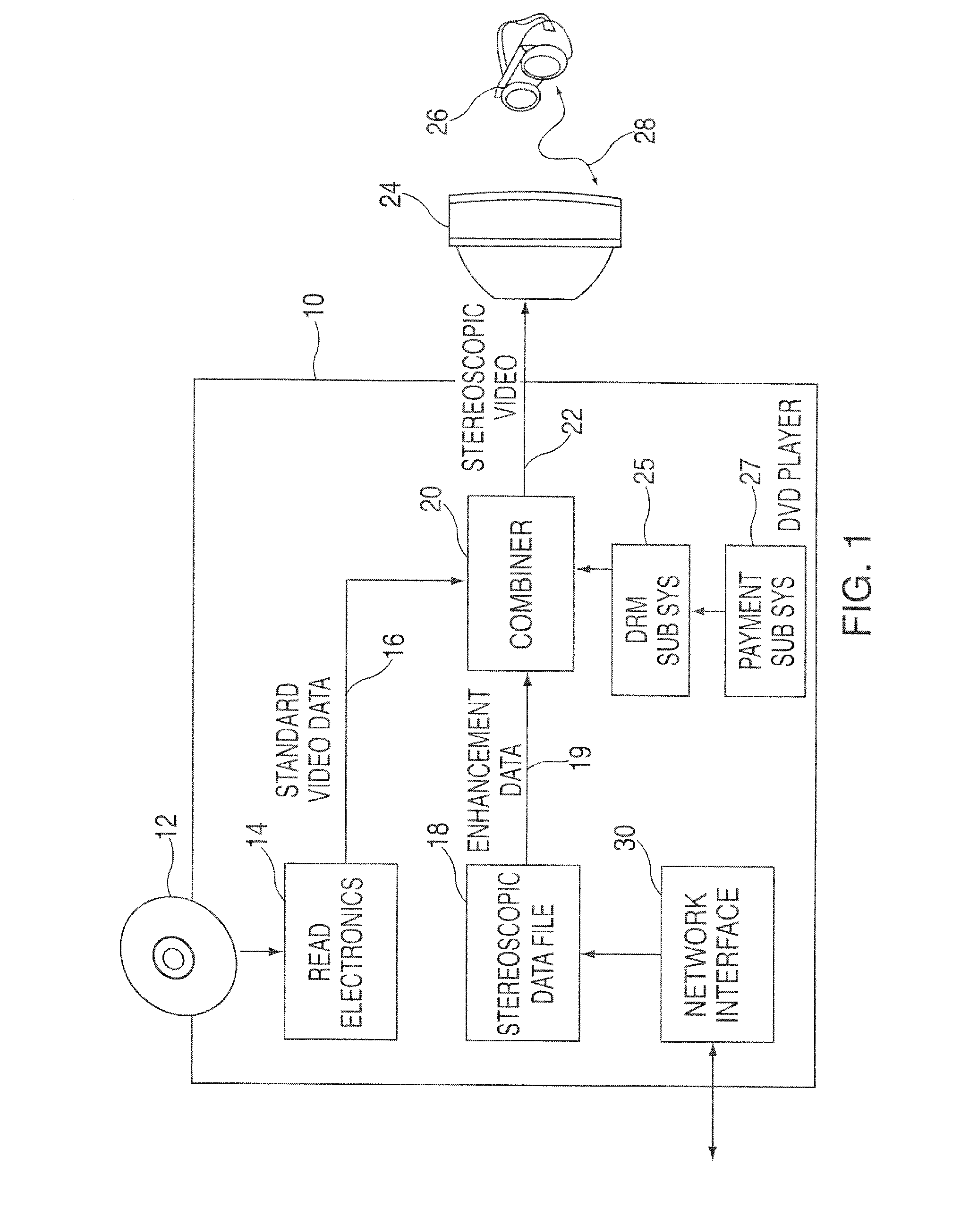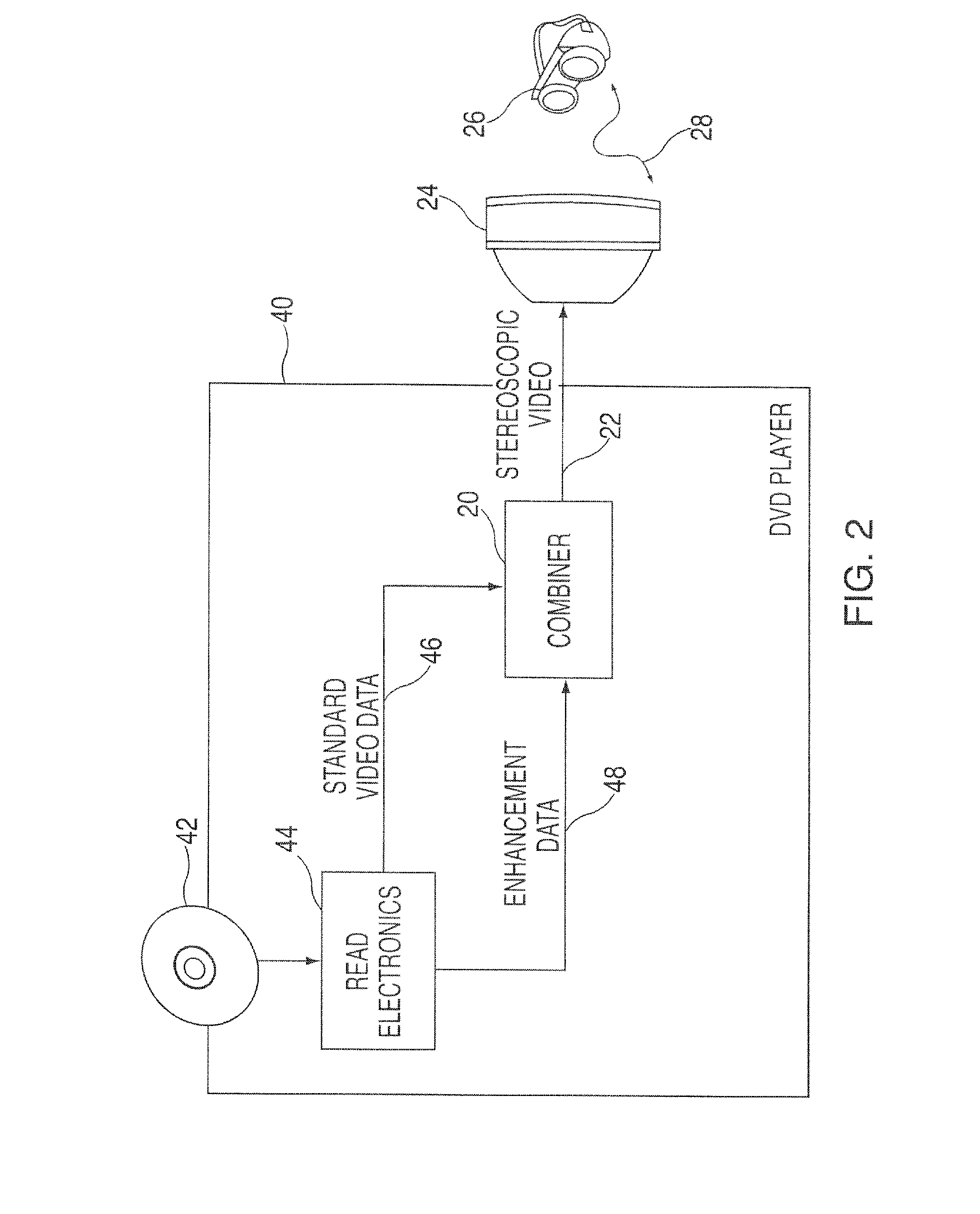Method and apparatus for generating stereoscopic images from a DVD disc
a stereoscopic image and dvd disc technology, applied in the field of generating stereoscopic images from dvd discs, can solve the problems of increasing the cost of manufacturing discs, increasing the cost of process, and so as to reduce the data rate and increase the intensity of each pixel. , the effect of increasing the intensity value of each pixel
- Summary
- Abstract
- Description
- Claims
- Application Information
AI Technical Summary
Problems solved by technology
Method used
Image
Examples
first embodiment
[0035]In a first embodiment, a system and method is provided in which a stereoscopic program is displayed using content obtained from a standard DVD and a separate file containing enhancement data. The system further includes a player with means for decoding the enhancement data and the video data from the DVD, and combining them to generate stereoscopic video data. More specifically, as illustrated in FIG. 1, a system 10 receives a first DVD 12 that contains standard content. Data from DVD 12 is obtained by a read electronics member 14 which includes a read head (not shown). Member 14 decodes the data from the DVD and generates a standard video data SD signal 16.
[0036]The system 10 also receives a stereoscopic data file 18 that includes enhancement or ENH data 19 necessary to convert the standard video data 16 into a stereoscopic video signal SSVS. This stereoscopic video signal may comprise alternate video lines or fields intended for the viewer's left and right eyes, respectively...
second embodiment
[0040]In a second embodiment, shown in FIG. 2, a single DVD 42 includes both a standard video program data and enhancement data. The player 40 includes a read electronics member 44 that reads from the DVD 42 both the standard video data 46 and the enhancement data 48 to generate stereoscopic video data. The two are combined in combiner 20 which then generates a stereoscopic or 3D image as discussed above. It should be understood that in FIG. 2 for the purpose of logical clarity, the two data streams 46, 48 are shown separately, but in many physical implementations a single data stream 22 containing both standard video data and enhancement data is recovered by the read electronics member 44, and the standard data and enhancement data portions are first extracted or de-multiplexed from the single stream by the read electronics member 44 before being separately decoded and combined to form the stereoscopic video, as necessary.
third embodiment
[0041]In a third embodiment, a system and method are provided in which the enhancement data is received in a stream rather then as a single data file stored in a memory. As shown in FIG. 3, in this system 60, a DVD 62 is read by a read electronics member 64. Member 64 then generates the standard video data stream 66 to combiner 68. Enhancement data with the information required for stereoscopic presentation is received from a remote server (either via an Inter- or Intra-net, not shown) through a network interface 70. The stream of enhancement data 72 is required to generate the stereoscopic video signal 22 and is supplied to the combiner 68.
[0042]The source of the enhancement data stream may be a data server operated by the provider of the DVD content, or any other party authorized by the content provider. A payment beyond the original cost of the DVD may be required to authorize the player to decode the stream using e.g. a payment subsystem 73.
[0043]A Digital Rights Management (DRM...
PUM
 Login to View More
Login to View More Abstract
Description
Claims
Application Information
 Login to View More
Login to View More - R&D
- Intellectual Property
- Life Sciences
- Materials
- Tech Scout
- Unparalleled Data Quality
- Higher Quality Content
- 60% Fewer Hallucinations
Browse by: Latest US Patents, China's latest patents, Technical Efficacy Thesaurus, Application Domain, Technology Topic, Popular Technical Reports.
© 2025 PatSnap. All rights reserved.Legal|Privacy policy|Modern Slavery Act Transparency Statement|Sitemap|About US| Contact US: help@patsnap.com



